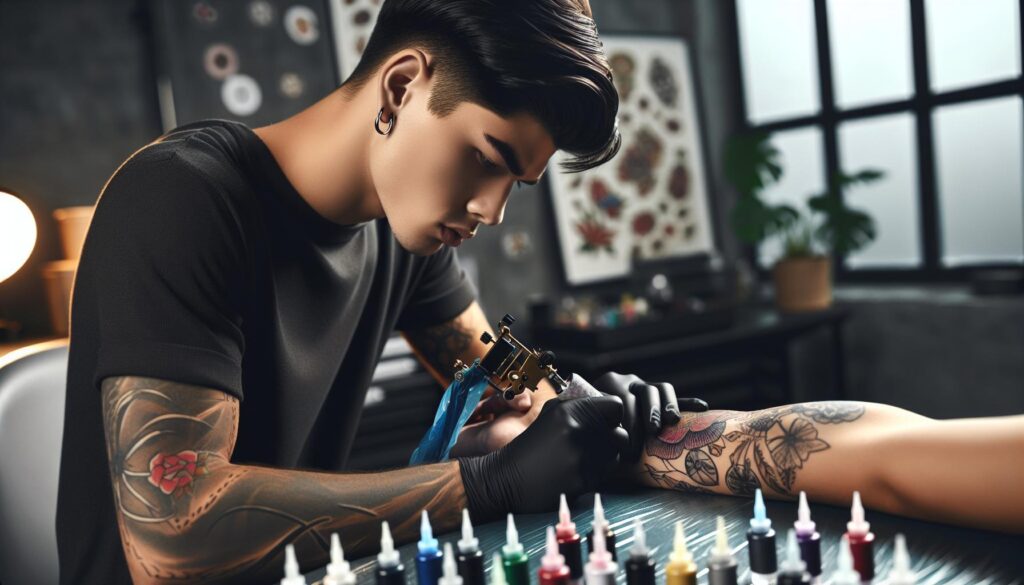Embarking on your tattoo journey is thrilling, and mastering shading is a crucial step toward creating stunning artwork. We know that effective shading transforms a simple design into a vivid masterpiece, adding depth and dimension that truly stand out. Whether you’re a novice eager to hone your skills or looking to refine your technique, understanding the fundamentals of shading is essential.
In this guide, we’ll explore the key principles and techniques that make shading in tattooing both an art and a science. From selecting the right needles to mastering light and shadow, we’ve got you covered. Our expert insights will help you build a strong foundation, ensuring your tattoos not only look professional but also resonate with lasting beauty. Let’s jump into the industry of shading and elevate your tattooing create to the next level.
Understanding Tattoo Shading Basics
Shading is a fundamental skill that elevates tattoo artistry. It brings depth and realism, transforming simple outlines into stunning pieces of art.
Importance of Shading in Tattoo Art
Shading adds dimension and texture, making tattoos look more lifelike. It highlights contrasts, emphasizing light and shadow within the design. Artists use shading to create smooth gradients, improving the overall appearance. Effective shading can turn a flat image into a ever-changing masterpiece. Also, it helps in defining shapes and improving details, making the artwork more intricate and appealing.
Key Differences in Shading Techniques
Different shading techniques cater to various styles and effects. Smooth Shading involves gentle transitions, perfect for realistic portraits and soft designs. Stipple Shading uses dots to build texture, ideal for intricate and detailed artwork. Gradient Shading creates gradual changes in color intensity, suitable for adding depth to larger tattoos. Line Shading incorporates lines to define shadows and highlights, often used in traditional and bold styles. Each technique offers unique advantages, allowing artists to choose the best method for their exact tattoo vision.
Selecting Tools for Beginner Shading
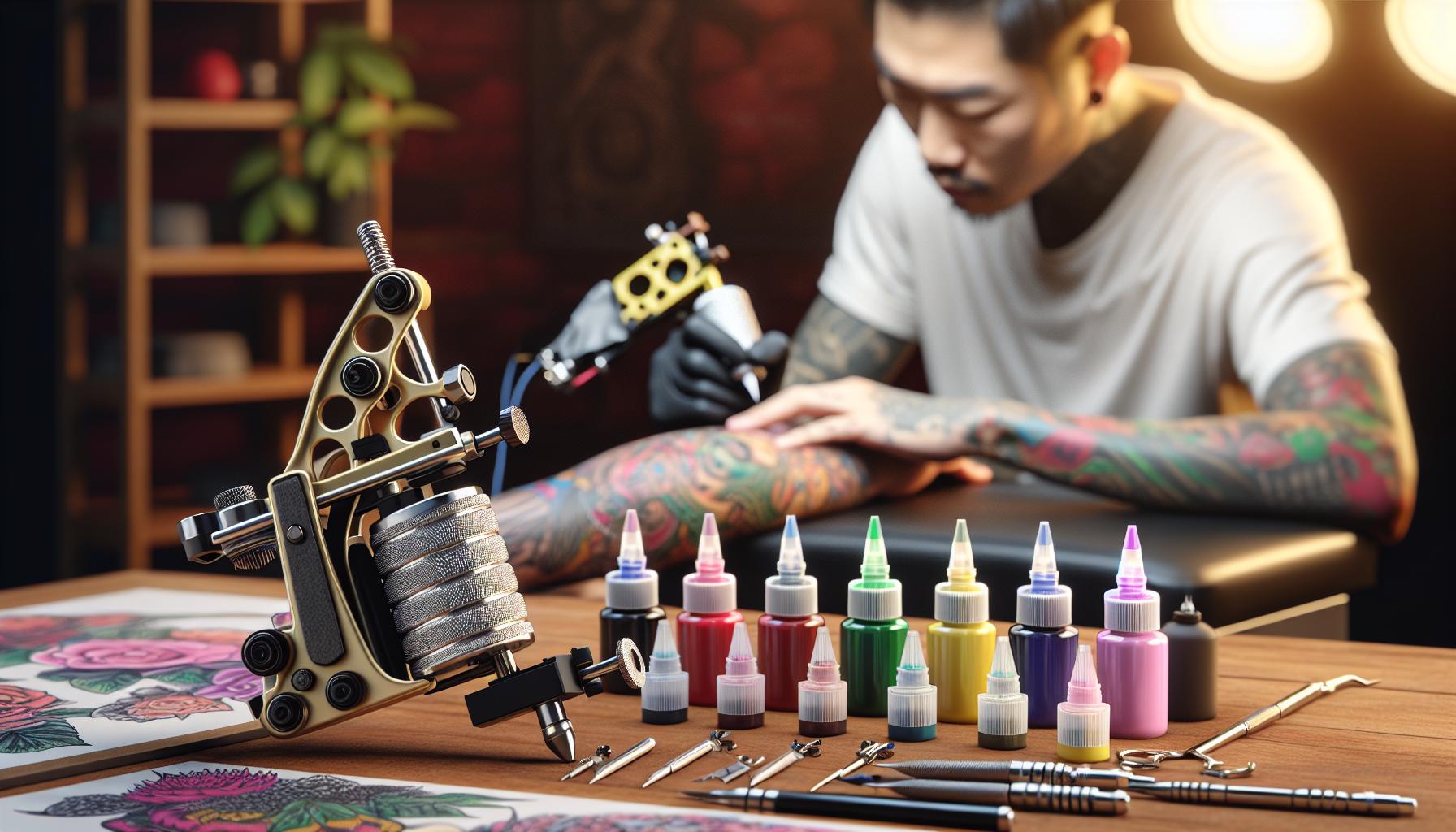
To achieve smooth and precise shading, it’s essential to have the right tools in our kit. Let’s explore the must-have equipment for beginners.
Essential Equipment for Shading
- Tattoo Machine: A reliable machine forms the backbone of any shading setup. We recommend using a rotary or coil machine specifically designed for shading tasks.
- Quality Needles: Choosing the proper needles is crucial for different shading techniques. Our top picks include magnums, round shader, and round liner needles.
- Ink Selection: Selecting vibrant and long-lasting inks ensures your shading stands out. We opt for reputable brands known for their consistency and safety.
- Power Supply: A consistent power supply keeps our shading process stable, preventing unwanted fluctuations that could affect the outcome.
- Grip and Tube: Comfortable grips and tubes enhance control during shading, allowing for smoother and more accurate lines.
Choosing the Right Ink and Needles
- Magnum Needles: These are perfect for shading larger areas, providing a softer and more diffused look. We prefer magnums with rounded corners to eliminate visible edges during shading.
- Round Shader Needles: Ideal for intricate designs, round shaders help add fine details and smooth transitions. They work great for shading tight corners and small spaces.
- Round Liner Needles: Best suited for stipple shading and adding precise details like eyes and lashes. Round liners let us add meticulous shading without overcrowding the design.
- Needle Size and Depth: It’s important that the needle protrudes no more than 1mm from the module. This ensures optimal shading depth, typically ranging between 0.5 and 1mm.
Learning Fundamental Shading Techniques
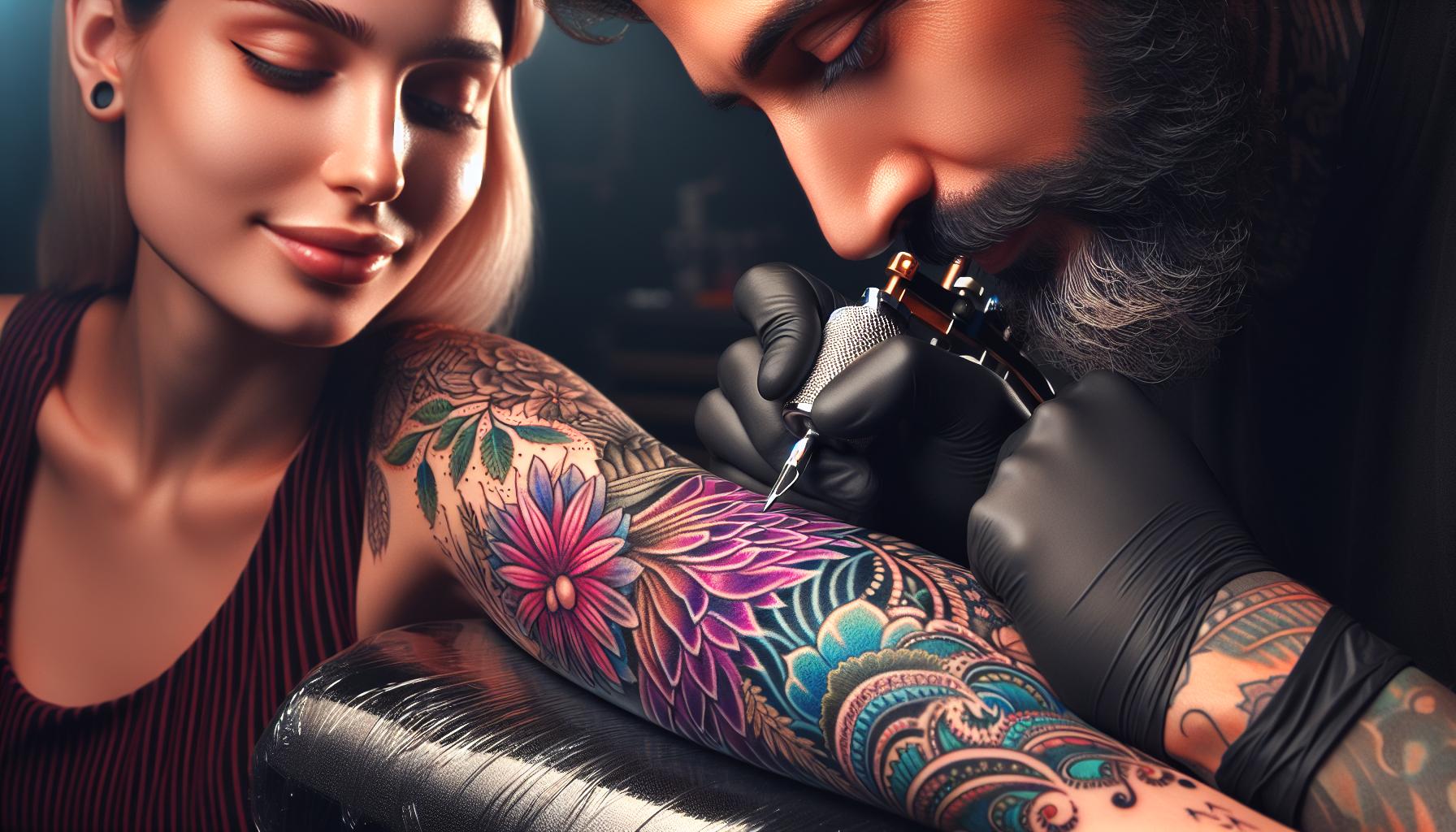
Mastering these shading techniques will elevate your tattoo artistry to the next level. Let’s jump into some essential methods that every beginner should know.
Gradient and Blend Methods
Gradient and blend methods are pivotal for achieving smooth transitions in your tattoos. We use gradient shading to create a seamless flow of color, improving the depth and dimension of the design. For instance, transitioning from dark to light shades can make a tattoo appear more lifelike and ever-changing. Blend methods, on the other hand, involve merging different shading techniques to produce a cohesive look. By combining whip shading with gradient techniques, we can create intricate details that stand out while maintaining overall harmony in the artwork. These methods are especially effective in large areas, such as floral designs or landscapes, where smooth color transitions are essential.
Stippling and Soft Shading
Stippling and soft shading offer unique textures and effects that add complexity to your tattoos. Stippling involves placing many small dots to build up shading, allowing for detailed and nuanced designs. This technique is perfect for creating intricate patterns and subtle gradients, giving your tattoos a delicate and refined appearance. Soft shading, meanwhile, focuses on gentle blending to achieve a smooth and understated look. By using lighter needle pressure and slower movements, we can produce soft shadows that enhance the overall realism of the tattoo. Combining stippling with soft shading techniques allows us to create tattoos that are both detailed and elegantly shaded, providing a balanced and professional finish.
Preparing for Shading Sessions
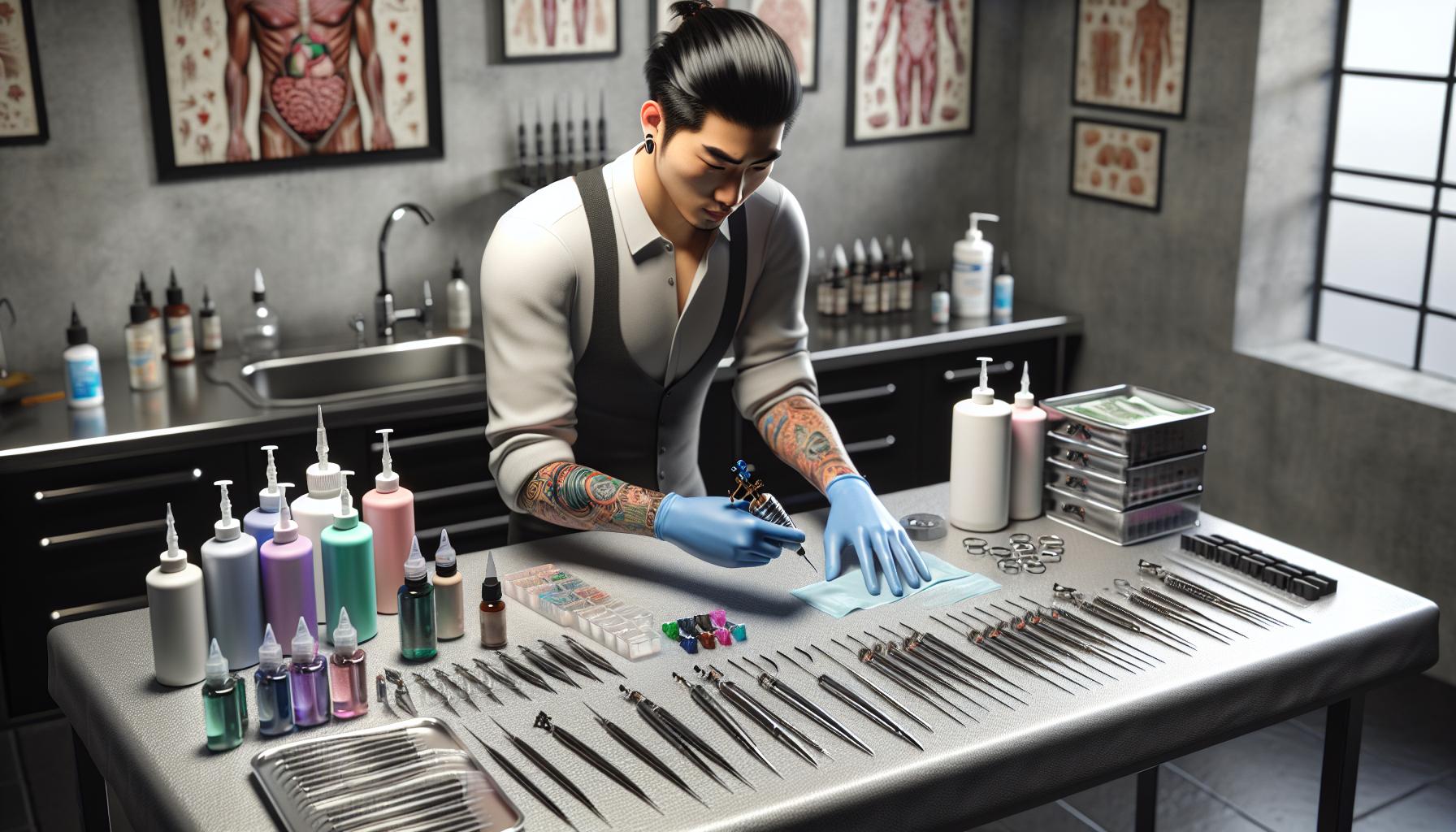
Proper preparation ensures smooth shading sessions and outstanding results. Let’s jump into essential tips to set you up for success.
Skin Preparation Tips
- Clean the Area Thoroughly: Start by washing the skin with antibacterial soap to remove any dirt and oils. This step minimizes the risk of infection and ensures the ink adheres properly.
- Shave if Necessary: Gently shave the tattoo area to eliminate any excess hair. This provides a smooth surface for shading and helps prevent discomfort during the session.
- Hydrate the Skin: Moisturize the area with a fragrance-free lotion. Well-hydrated skin absorbs ink better, resulting in smoother gradients and richer colors.
- Avoid Sun Exposure: Ensure the skin is not sunburned or tanned before shading. Sun-damaged skin can be more sensitive and may not take ink as effectively.
Maintaining a Clean Workspace
- Sterilize Your Equipment: Always use sterilized needles and tools. Proper sterilization prevents cross-contamination and promotes a safe tattooing environment.
- Disinfect Surfaces Regularly: Wipe down all surfaces with medical-grade disinfectant before and after each session. This practice keeps your workspace hygienic and free from harmful bacteria.
- Organize Your Tools Efficiently: Keep your tools neatly arranged and within easy reach. An organized workspace enhances efficiency and allows you to focus on delivering quality shading.
- Use Disposable Supplies: Use single-use gloves, ink caps, and paper towels. Disposable items reduce the risk of contamination and maintain a sterile environment throughout the shading process.
Overcoming Common Shading Challenges

Avoiding Patchy Shading
- Maintain Consistent Hand Pressure
Applying steady pressure ensures even ink distribution. Fluctuating pressure can lead to uneven shading and patchiness.
- Choose the Right Needle Configuration
Selecting appropriate needles, like soft-edge magnums, helps create smooth gradients. Using the wrong needle type often results in inconsistent shading.
- Optimize Machine Settings
Adjusting your tattoo machine’s speed and voltage can prevent ink from spreading unevenly. Proper settings are crucial for achieving a flawless finish.
- Prepare the Skin Properly
Cleaning and moisturizing the skin before shading promotes better ink absorption. Well-prepared skin reduces the risk of patchy areas.
- Use Quality Inks
High-quality inks flow more evenly under the skin. Lower quality inks may clog needles or fail to settle uniformly, causing patchiness.
Correcting Shading Mistakes
- Identify the Mistake Early
Spotting shading errors during the session allows for immediate correction. Addressing issues promptly minimizes their impact on the final tattoo.
- Blend the Affected Area
Gently blending over mistakes can smooth out uneven spots. This technique helps integrate errors seamlessly into the overall design.
- Adjust Needle Depth
Modifying the needle’s depth ensures proper ink placement. Incorrect depth can cause excessive or insufficient shading, which needs correction.
- Reapply Ink Carefully
Adding fresh ink to problematic areas enhances uniformity. Careful application prevents further inconsistencies and restores the tattoo’s appearance.
- Seek Feedback from the Client
Communicating with the client about any shading issues ensures their satisfaction. Their input can guide effective corrective actions.
Enhancing Your Shading Skills
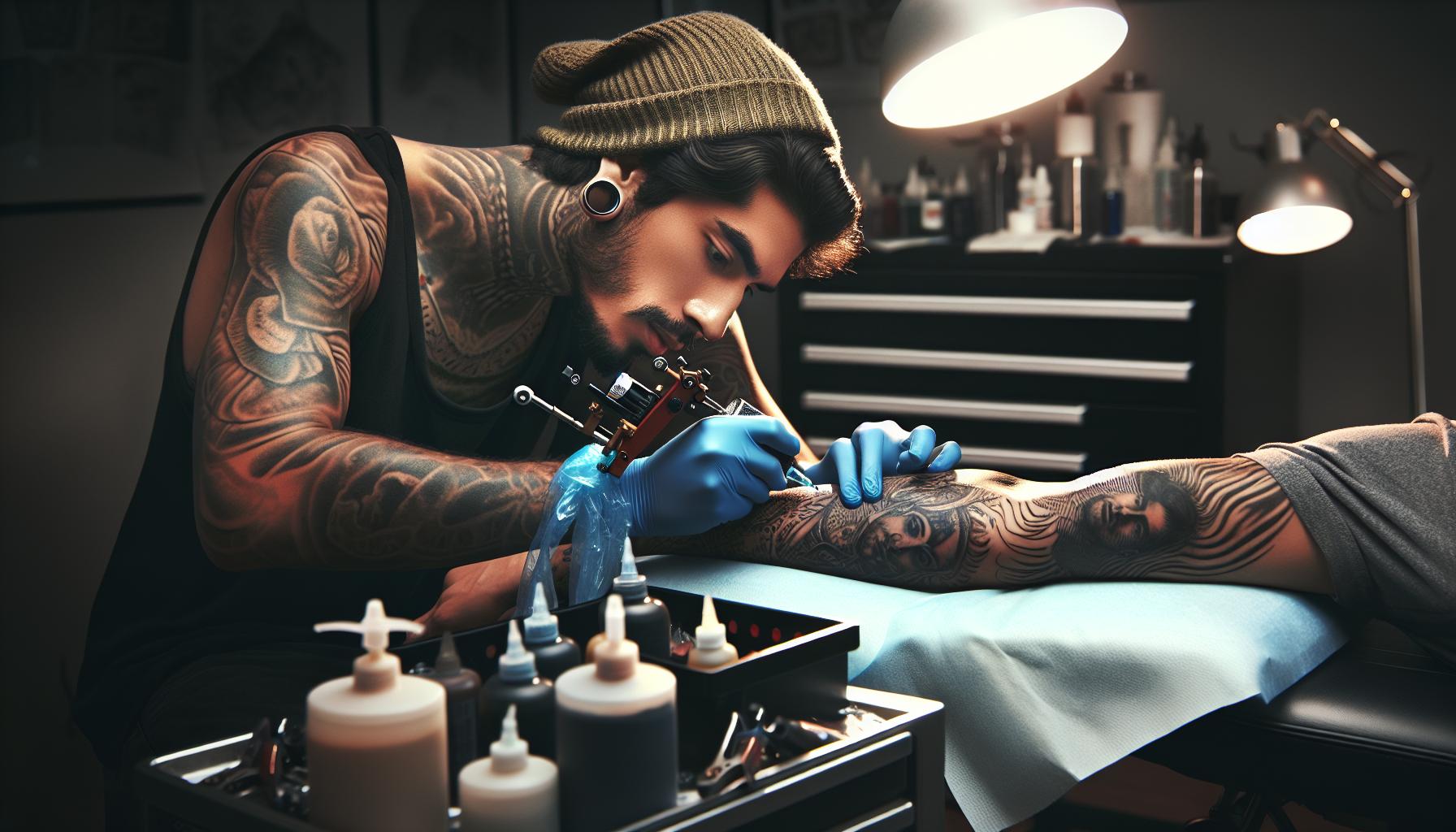
Practicing on Different Skin Types
Exploring various skin types is essential for mastering shading techniques. Each skin type reacts differently to ink, affecting how shading appears. For example, oily skin may cause ink to spread, while dry skin can lead to sharper lines. By practicing on diverse skin textures, we can adjust our needle depth and pressure accordingly. Also, understanding how factors like age and skin condition influence shading helps us create consistent results. This hands-on experience ensures our shading remains smooth and uniform across all clients.
Learning from Experienced Tattoo Artists
Gaining insights from seasoned tattoo artists accelerates our shading proficiency. Observing their techniques provides valuable tips on hand movement and needle control. For instance, watching how they execute whip shading or pendulum shading can refine our approach. Also, seeking feedback from mentors helps us identify and correct mistakes early. Participating in workshops or shadowing professionals also exposes us to advanced shading methods like scumbling. Embracing these learning opportunities enhances our skills and boosts our confidence in delivering high-quality tattoos.
Conclusion
Mastering shading is a game changer for our tattoo artistry. It allows us to bring our designs to life with depth and dimension. By honing our shading techniques and using the right tools we can consistently produce stunning professional tattoos.
Embracing continuous practice and learning from seasoned artists keeps our skills sharp and our work exceptional. We’re excited to see how our dedication to shading elevates our create and satisfies our clients.
Proper shading sets us apart and builds our reputation as skilled tattoo artists. Let’s stay committed to perfecting this essential skill and watch our artistry thrive.
Frequently Asked Questions
Why is mastering shading important in tattooing?
Mastering shading is crucial in tattooing as it adds depth and dimension to designs, transforming simple artwork into vibrant masterpieces. Effective shading brings realism and texture, making tattoos appear more lifelike. It highlights contrasts and creates smooth gradients, enhancing the overall quality and appeal of the tattoo. Whether you’re a beginner or an experienced artist, strong shading skills are fundamental for elevating your artistry and producing professional, impressive tattoos.
What are the essential tools for beginner tattoo shading?
For beginner tattoo shading, essential tools include a reliable tattoo machine, quality needles (such as magnums, round shaders, and round liners), vibrant inks, a consistent power supply, and comfortable grips and tubes. Magnum needles are ideal for larger areas, round shaders for intricate designs, and round liners for precise details. Additionally, having the right needle size and maintaining proper depth are crucial for optimal shading results. Investing in quality equipment lays the foundation for successful shading techniques.
What are the different shading techniques in tattooing?
There are several shading techniques in tattooing, each offering unique effects:
- Smooth Shading: Ideal for realistic portraits, creating soft transitions.
- Stipple Shading: Uses small dots for intricate details.
- Gradient Shading: Adds depth with seamless color flow.
- Line Shading: Common in traditional styles, using defined lines.
Each technique enhances the tattoo’s appearance differently, allowing artists to choose the best method for their desired design.
How can I prepare for a shading session?
Preparing for a shading session involves thorough skin and workspace preparation. Clean the tattoo area, shave if necessary, and ensure the skin is hydrated. Avoid sun exposure before the session. In your workspace, sterilize all equipment, disinfect surfaces, and organize your tools efficiently. Use disposable supplies to minimize contamination risks. Proper preparation ensures smooth execution, high-quality shading results, and a safe tattooing environment.
How to avoid patchy shading in tattoos?
To avoid patchy shading, maintain consistent hand pressure and use the correct needle configuration. Optimize your machine settings for smooth ink flow and ensure the skin is properly prepared. Choose high-quality inks for even distribution and blend colors seamlessly. Regular practice and attention to detail help achieve uniform shading. Additionally, selecting the right shading technique for the design contributes to a flawless finish.
What should I do if I make a shading mistake?
If you make a shading mistake, identify the error early and blend the affected area to soften it. Adjust the needle depth if necessary and carefully reapply ink to correct the shading. It’s important to seek feedback from the client to ensure their satisfaction. Learning from each mistake and refining your technique will improve your shading skills over time, resulting in better tattoo outcomes.
How does skin type affect shading in tattoos?
Different skin types react uniquely to ink, impacting the shading appearance. Factors like age and skin condition influence how ink settles and fades. Thinner or scarred skin may show shading differently compared to thicker, well-hydrated skin. Understanding these variations helps artists adjust their techniques for consistent results. Practicing on various skin types enhances your ability to create beautifully shaded tattoos across diverse clients.
How can I improve my shading skills as a tattoo artist?
Improving shading skills involves practicing on different skin types and learning from experienced artists. Observe their techniques, seek constructive feedback, and participate in workshops or shadow professionals. Experiment with various shading methods like gradient, stippling, and soft shading to find your style. Continuous learning and hands-on experience build confidence and proficiency, enabling you to deliver high-quality, elegantly shaded tattoos.
What are the common challenges in tattoo shading and how to overcome them?
Common shading challenges include patchy application, inconsistent gradients, and improper needle depth. To overcome these, maintain steady hand pressure, select the appropriate needle configuration, and fine-tune machine settings for optimal ink flow. Proper skin preparation and using high-quality inks are essential for even shading. Additionally, regular practice and attention to technique help mitigate these issues, ensuring smooth and professional shading results.
What are gradient and blend methods in tattoo shading?
Gradient and blend methods are fundamental shading techniques that create smooth color transitions in tattoos. Gradient Shading involves seamlessly flowing from dark to light areas, adding depth and dimension. Blend Methods combine different shading techniques to achieve a cohesive look. These approaches enhance the tattoo’s realism and visual appeal, allowing artists to produce intricate and elegantly shaded designs that stand out.

